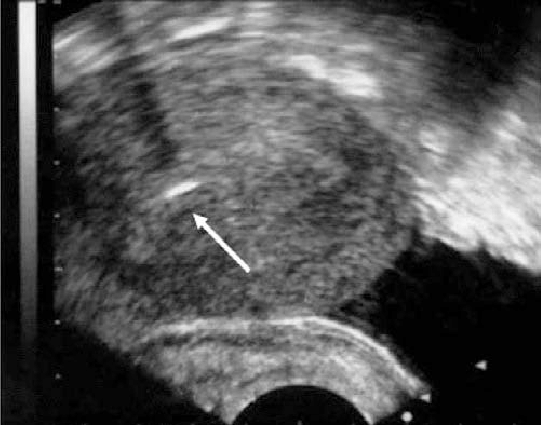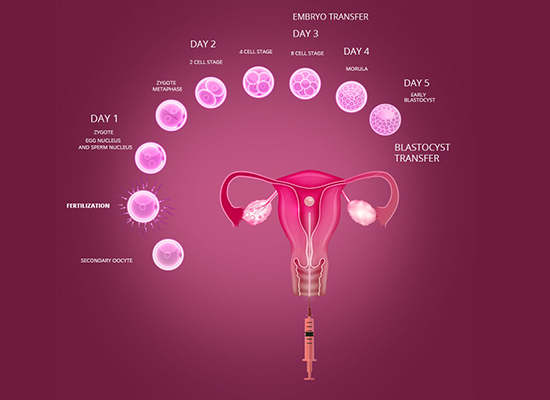Blastocyst Transfer
Blastocyst Transfer
Blastocyst Transfer is an advanced technique used in In Vitro Fertilization (IVF) that enhances the chances of a successful pregnancy. Unlike traditional embryo transfer, where embryos are transferred at the 2-3 day stage, Blastocyst Transfer involves transferring embryos at the 5-6 day stage, when they have developed into a more advanced form. This method takes advantage of the embryo’s natural development, which may lead to better implantation rates and higher success rates for IVF.


What is Blastocyst Transfer?
In a typical IVF cycle, embryos are cultured for 2-3 days before being transferred into the woman’s uterus. However, Blastocyst Transfer involves growing the embryos for an additional 2-3 days in the laboratory, allowing them to reach the blastocyst stage. This is the stage at which the embryo has developed into a fluid-filled structure and is ready to implant into the uterine lining.
At the blastocyst stage, the embryo consists of two main parts:
- Inner Cell Mass: This will become the fetus after implantation.
- Trophoblast: This will form the placenta, providing nutrients and support for the developing fetus.
The process of growing embryos to the blastocyst stage before transfer helps to identify the healthiest embryos that are more likely to result in a successful pregnancy.
How Does Blastocyst Transfer Work?
Egg Retrieval and Fertilization: The first steps of the IVF process involve stimulating the ovaries to produce multiple eggs, retrieving the eggs, and fertilizing them with sperm (either from the partner or a donor). This results in the creation of embryos.
Embryo Culture: In traditional IVF, embryos are cultured for 2-3 days before transfer. However, in Blastocyst Transfer, the embryos are cultured for 5-6 days to allow them to develop into blastocysts.
Selection of the Best Embryos: By day 5 or 6, embryologists can assess the development and quality of the embryos more accurately. The healthiest embryos with the highest potential for implantation are selected for transfer.
Embryo Transfer: One or two of the best-quality blastocysts are transferred into the woman’s uterus using a thin, flexible catheter. This process is generally painless and does not require anesthesia.
Post-Transfer Monitoring: After the transfer, the woman’s body is monitored for signs of pregnancy. A blood test is usually done 10-14 days later to confirm whether implantation has occurred.
Who Can Benefit from Blastocyst Transfer?
Blastocyst Transfer is an ideal option for couples undergoing IVF, especially those facing certain challenges or seeking higher chances of success. It can be particularly beneficial for:
Older Women: As women age, egg quality and embryo development can decline. Growing embryos to the blastocyst stage helps increase the chances of selecting the healthiest embryos, improving the chances of pregnancy.
Women with Previous IVF Failures: For women who have experienced unsuccessful IVF cycles, Blastocyst Transfer can improve the likelihood of implantation, as it better mimics the natural embryo development process.
Good Quality Embryos: If multiple embryos are created during an IVF cycle and the embryos are of high quality, Blastocyst Transfer can increase the chances of selecting the most viable embryos for transfer.
Embryo Selection: By waiting until the blastocyst stage, doctors can select embryos with the highest potential for successful implantation, which may lead to higher IVF success rates.
Advantages of Blastocyst Transfer
Higher Success Rates: Blastocyst Transfer can improve the chances of pregnancy compared to the traditional 2-3 day embryo transfer because it allows for better selection of the most viable embryos.
Better Implantation Potential: Since blastocysts are at a more advanced stage of development, they are better able to implant into the uterine lining, increasing the chances of a successful pregnancy.
Reduced Risk of Multiple Pregnancies: Because the best quality embryos are selected, fewer embryos may need to be transferred, which reduces the likelihood of multiple pregnancies (twins or more).
Improved Embryo Quality Selection: Culturing embryos to the blastocyst stage gives embryologists more time to assess their quality, allowing them to select the most viable embryos for transfer.
Avoiding Transfer of Non-Viable Embryos: Some embryos may arrest (stop developing) before reaching the blastocyst stage. Blastocyst culture allows for the elimination of embryos that are unlikely to result in a pregnancy.
Are There Any Risks with Blastocyst Transfer?
While Blastocyst Transfer has many benefits, it is not without risks or limitations:
Embryo Arrest: Not all embryos will reach the blastocyst stage. In some cases, embryos may fail to develop, which can reduce the number of embryos available for transfer.
Embryo Development Challenges: For women with lower ovarian reserve or those who are older, fewer embryos may develop into blastocysts, potentially reducing the available embryos for transfer.
Potential for Higher Costs: Since Blastocyst Transfer involves an additional 2-3 days of embryo culture, it may increase the overall cost of the IVF cycle.
Success Rates of Blastocyst Transfer
The success rates of IVF using Blastocyst Transfer are generally higher than those of traditional embryo transfer. Research shows that transferring blastocysts can improve implantation rates, leading to higher pregnancy success rates, particularly in women with advanced maternal age or those with previous IVF failures. However, success rates depend on several factors, including the woman’s age, egg quality, sperm quality, and the number of embryos created.
Is Blastocyst Transfer Right for You?
Blastocyst Transfer may be an excellent option for you if you are undergoing IVF and want to maximize your chances of a successful pregnancy. Your fertility specialist will assess your individual circumstances, including your age, ovarian reserve, and the quality of your embryos, to determine if Blastocyst Transfer is the right choice for you.

Best Infertility Doctor in Gurgaon, Dr. Anshika Lekhi, a renowned IVF specialist, offers exceptional infertility treatments.
Pages
Contact Us
- 7505 Basement Bougainville Street, near Supermart 2, Sector 43, Gurugram, Haryana 122009
- 98735 24270
- info@thefertilife.com
Updates
Check New updates below.


Copyright ©2025 | All Rights Reserved.
